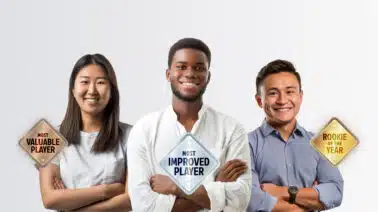
Today, we are witnessing a rapidly-changing employment landscape that is the direct result of extraordinary technological advancement. These changes are profound enough that old rules about creating a “career path” are being rewritten in real time. On the employer side, the pressure to fill so-called “new collar” jobs is challenging organizations to pursue new strategies for identifying and recruiting qualified talent. On the employee side, everyone from first-time job seekers, to mid-career professionals, to those approaching traditional retirement age, is having to reevaluate their skillsets.
For some, embracing lifelong learning is a choice; for others, it is a necessity.
Into this dynamic and ever-evolving ecosystem has come an intriguing array of new learning providers, virtually all of which have emerged as responses to the changing needs of both employers and job-seekers. These providers offer experiences that are largely online, though many incorporate blended learning options. The platforms vary widely with regards to everything from curriculum quality, to commitment level, to cost, but the best of these providers offer experiences that are commensurate with their brick-and-mortar counterparts—where there is such a thing.
What is compelling about many innovative new learning providers, is that they don’t have brick-and-mortar counterparts.
In many cases, these new learning platforms were developed specifically to address needs that “traditional” universities weren’t meeting. This has made for a challenging landscape when it comes to creating a career path, and the questions that emerge are many:
- What does this all mean for the future of “traditional” degree programs? Are they still the best option? Are they obsolete?
- How should someone in pursuit of a new career choose between these different options?
- Is it an either/or choice? Brick-and-Mortar University vs. Online School? Computer Science degree vs. Nanodegree credential?
- What about the idea of “stackable skills?” Should one earn a “traditional” degree, then layer specific skills on top of it, learned through online providers?
- Do bootcamps work? If so, why are so many shutting down?
- Can traditional degree programs keep up with the pace of technology?
- Which degrees and credentials do employers value, and which do they disregard?
Here at Udacity, we consider it our mission to provide the best learning experience possible for every student who enrolls with us. In pursuit of this goal, we offer many different ways to learn. Our Nanodegree programs all feature personalized services such as mentorship, expert project review, Slack communities and forums, career guidance, and more. But while every program offers a core set of shared benefits, there are many variations as well. Our Udacity Connect program offers a blended learning model designed to accelerate student success. The Nanodegree Plus option features additional training and guidance for job-seekers, and includes a job guarantee. Our partnership with Georgia Tech for the Online Master of Science in Computer Science allows us to work directly with a brick-and-mortar university to provide yet one more groundbreaking learning opportunity.
We want to provide our students with the skills and experience they need to advance their careers, and we want our graduates to emerge job-ready, with viable career opportunities open to them.
At the center of our approach are our hiring partnerships and curriculum collaborations. It is through these vital relationships—with leading companies like Google, IBM, Mercedes-Benz, Didi Chuxing, NVIDIA, AT&T, and more—that we are best able to directly connect learning to jobs on behalf of our students.
The modern truth is that there is no longer one right answer when it comes to creating your career path. This is both an opportunity, and a challenge—on the one hand, there are no rules you have to follow. On the other hand, there are no rules to follow!
What this new age rewards is the proactive thinker, the researcher, the planner. To succeed, you need to understand your objective, and identify the steps necessary to achieve that objective. You need to develop and deploy strategies that will enable you to take whatever steps are necessary, and you need to execute on your strategies so that you successfully reach your objective. Put into job terms, you need to understand the demands and requirements of the role you want to occupy, and you need to identify the steps required to meet and fulfill those demands and requirements. You need to develop and deploy strategies that will enable you to learn what you need to learn, experience what you need to experience, and build what you need to build, and you need to execute on your strategies so that when the time comes to apply and interview, you’ve got what it takes to land the job. We believe our Nanodegree programs represent the most efficient, effective, and flexible way to achieve your career goals.
The pressure to create your own career path is a challenge—the freedom to do so is an opportunity.



